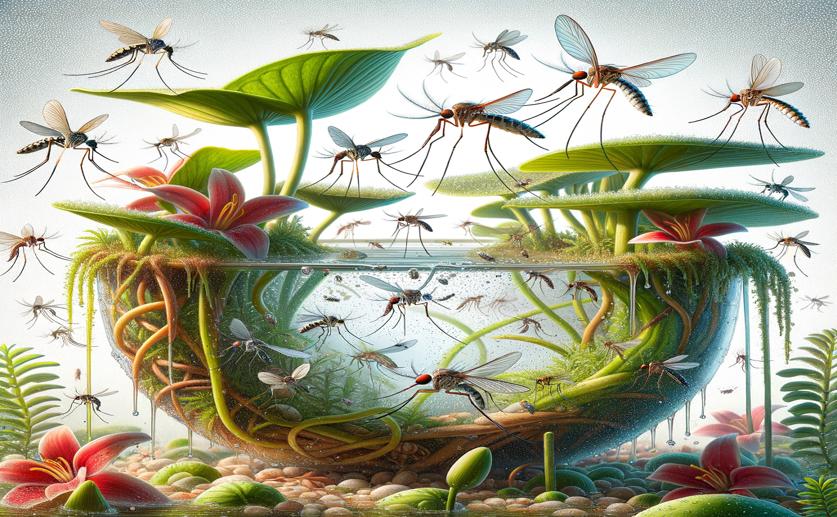
Diversity of Mosquito Species in Natural Water-Filled Plant Containers
Jenn Hoskins
7th May, 2024

Image Source: Natural Science News, 2024
Key Findings
- Study on Car Nicobar Island finds diverse mosquito species in natural plant water containers
- Mosquitoes that can spread malaria, dengue, and filariasis were among the species identified
- Different mosquito species showed preferences for specific breeding sites, like root holes or bamboo stumps
References
Main Study
1) Biodiversity of mosquitoes (Diptera: Culicidae) in phytotelmata from Car Nicobar Island, India.
Published 6th May, 2024
https://doi.org/10.1017/S0007485324000245
Related Studies
2) Mosquito community structure in phytotelmata from a South American temperate wetland.
3) Spatiotemporal dynamics of immature culicines (subfamily Culicinae) and their larval habitats in Mwea Rice Scheme, Kenya.
4) Studies on the breeding habitats of the vector mosquito Anopheles baimai and its relationship to malaria incidence in Northeastern region of India. Breeding habitats of Anopheles baimai and its role in incidence of malaria in Northeastern region of India.



 4th March, 2024 | Jenn Hoskins
4th March, 2024 | Jenn Hoskins